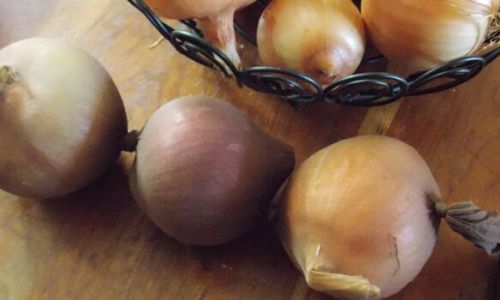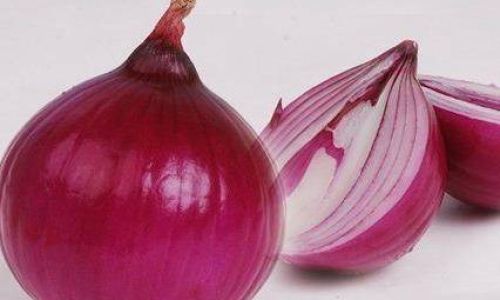Table of content
Introduction
Onions, a staple in countless cuisines worldwide, add flavor, texture, and nutritional value to dishes. From savory stews to crisp salads, onions play a pivotal role in enhancing the taste of food. However, maintaining their freshness and quality can be challenging, especially if you buy onions in bulk or grow your own. Proper preservation techniques can extend their shelf life, ensuring you have access to fresh onions whenever you need them. This comprehensive guide will explore various methods for how to preserve onions, focusing on techniques that maximize freshness and longevity.
Understanding Onion Storage Basics
Before diving into specific preservation methods, it’s crucial to understand the basics of onion storage. Onions are best stored in a cool, dry, well-ventilated environment. High humidity, warmth, and exposure to light can cause them to rot, sprout, or develop mold. Here are some general guidelines:
-
Temperature: Aim for a temperature range between 32°F to 50°F (0°C to 10°C). Colder temperatures can damage the onions, while warmer ones can cause them to spoil quickly.
-
Humidity: Keep humidity low to prevent mold and rot. Well-ventilated areas help maintain low humidity levels.

-
Light: Onions should be stored in darkness. Exposure to sunlight or artificial light can cause them to sprout and lose flavor.
-
Ventilation: Good air circulation is essential to prevent moisture buildup and the development of mold.
Common Preservation Methods
Now, let’s delve into the various methods for preserving onions, each with its own set of benefits and considerations.
Pantry Storage
For short-term storage (up to a month), the pantry can be a suitable option if conditions are right. Here’s how to do it:
-
Choose the Right Container: Use a mesh bag, wire basket, or a breathable container to allow for air circulation. Avoid sealing onions in plastic bags, as this traps moisture and can lead to spoilage.
-
Location: Place the container in a cool, dark corner of your pantry. Avoid areas near the stove or oven where temperatures fluctuate.
-
Inspection: Regularly check the onions for signs of mold, rot, or sprouting. Remove any affected onions immediately to prevent the spread of spoilage.
Refrigerator Storage
While not ideal for long-term storage due to the potential for flavor loss, refrigerating onions can extend their shelf life slightly longer than pantry storage, especially in warmer climates. Here’s how:
-
Preparation: Remove any outer layers of skin that might be damaged or dirty. Do not peel the onions completely.
-
Packaging: Place onions in a paper bag or an open plastic container with ventilation holes. Avoid sealing them tightly.
-
Placement: Store in the crisper drawer of your refrigerator, where humidity is lower and temperatures are more stable.
-
Usage: Use refrigerated onions within a few weeks for best flavor. Note that refrigerated onions may have a stronger taste when cooked.
Freezing Onions
Freezing onions is a great way to preserve them for longer periods, although it alters their texture slightly. Here’s a step-by-step guide:
-
Peeling and Chopping: Peel the onions and chop them into the desired size (fine, medium, or coarse). Blending or grating onions can also work but may result in a mushier texture when thawed.
-
Blanching (Optional): Blanching helps to retain color and texture but is not strictly necessary. To blanch, submerge chopped onions in boiling water for 2-3 minutes, then plunge them into ice water to stop the cooking process.
-
Drying: Pat the onions dry using paper towels to remove excess moisture. Moisture can cause freezer burn.
-
Freezing: Spread the onions in a single layer on a baking sheet and place it in the freezer until the onions are frozen solid. This prevents them from clumping together. Once frozen, transfer the onions to a freezer-safe bag or container, label it with the date, and store it in the freezer.
-
Usage: Thaw frozen onions in the refrigerator overnight or use them directly from frozen in cooked dishes. They may become softer and more watery when thawed but are perfect for soups, stews, and casseroles.
Dehydrating Onions
Dehydrating onions is an excellent method for long-term storage, preserving their flavor and texture in a concentrated form. Here’s how to do it:
-
Preparation: Peel and thinly slice or chop the onions. Blanching is optional but can enhance the final product.

-
Dehydrating: Use a food dehydrator or an oven set to its lowest temperature (around 140°F or 60°C). Spread the onions in a single layer on dehydrator trays or oven racks.
-
Drying Time: Dehydrating time can vary depending on the method and thickness of the slices. It typically takes 4-12 hours. The onions should be brittle and dry to the touch.
-
Storing: Store dried onions in an airtight container in a cool, dark place. They can last for several years.
-
Usage: Rehydrate dried onions by soaking them in water for about 10-15 minutes before using. They can be added to dishes as you would fresh onions, although their flavor will be more concentrated.
Pickling Onions
Pickling onions is a preservation method that adds a tangy, acidic flavor. It’s particularly suitable for smaller onion varieties like pearl onions. Here’s a basic recipe:
-
Ingredients: Fresh onions, vinegar (white, apple cider, or rice vinegar), sugar or honey, salt, spices (like mustard seeds, peppercorns, and bay leaves), and water (optional).
-
Preparation: Peel and clean the onions. You can leave them whole or halve them for smaller varieties.
-
Pickling Solution: In a pot, combine vinegar, sugar or honey, salt, and spices. Add water if you prefer a less intense vinegar flavor. Heat until the sugar and salt are dissolved.
-
Packing: Pack the onions into clean, sterile jars. Pour the hot pickling solution over them, ensuring they are completely submerged.
-
Sealing: Secure the jar lids tightly and allow the pickles to cool to room temperature. Store them in a cool, dark place.
-
Usage: Pickled onions can be enjoyed as a condiment, added to salads, or used in cooking. They will keep for several months refrigerated.
Canning Onions
Canning onions is another effective long-term preservation method. It involves processing onions in a hot water bath to create a vacuum-sealed environment that prevents spoilage.
-
Preparation: Peel and chop the onions. Blanch them for 2-3 minutes in boiling water, then plunge them into ice water.
-
Packing: Pack the onions into clean, sterile canning jars, leaving headspace as specified in your canning guide.
-
Processing: Fill a large pot with water and bring it to a boil. Submerge the jars in the water, ensuring they are fully covered. Process according to your canning guide’s instructions for the size of your jars (typically 30-45 minutes for quarts).
-
Cooling: Remove the jars from the water bath and let them cool completely. Check for seals by pressing the center of each lid; it should not move.
-
Storage: Store canned onions in a cool, dark place. They can last for several years.
-
Usage: Open the jars as needed, and use the onions within a year for best quality.
Conclusion
Preserving onions doesn’t have to be complicated. By understanding the basics of storage and selecting the right preservation method for your needs, you can enjoy fresh, flavorful onions throughout the year. Whether you choose pantry storage, refrigeration, freezing, dehydrating, pickling, or canning, each method offers unique benefits and can help you make the most of your onion harvest or bulk purchase. With proper care and attention, you can ensure that your onions remain fresh, delicious, and ready to enhance your culinary creations whenever you need them.






0 comments